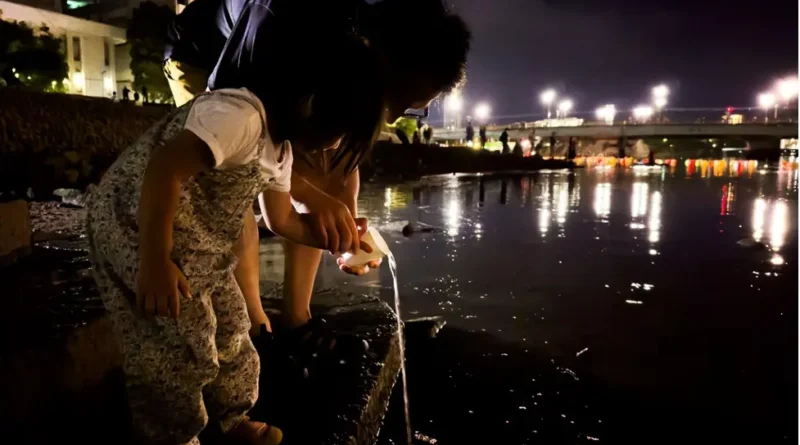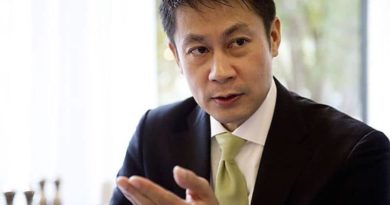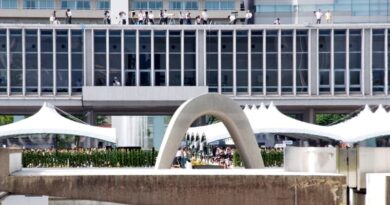The Waters of Hiroshima: Remembrance and Life
It’s August 6, 2023 and the 78th anniversary of the Hiroshima A-bombing is coming to a close. As the sun starts to set, people start to make their way to Hiroshima’s Peace Memorial Park. Over the next few hours, thousands of paper lanterns will be set afloat in memory of those who lost their lives in the bombing and its aftermath.
Just north of the “T-bridge” that served as the target for the pilots of the Enola Gay, people are gathered on a grassy river bank to pay tribute to the remarkable Toshie Une. For some it has been a very long 24 hours, starting with an overnight trek through the mountains that circle the city, followed by visits to 120 A-bomb memorial sites. Everyone, however, is full of energy and gratitude.
Hiroshima: City of Water
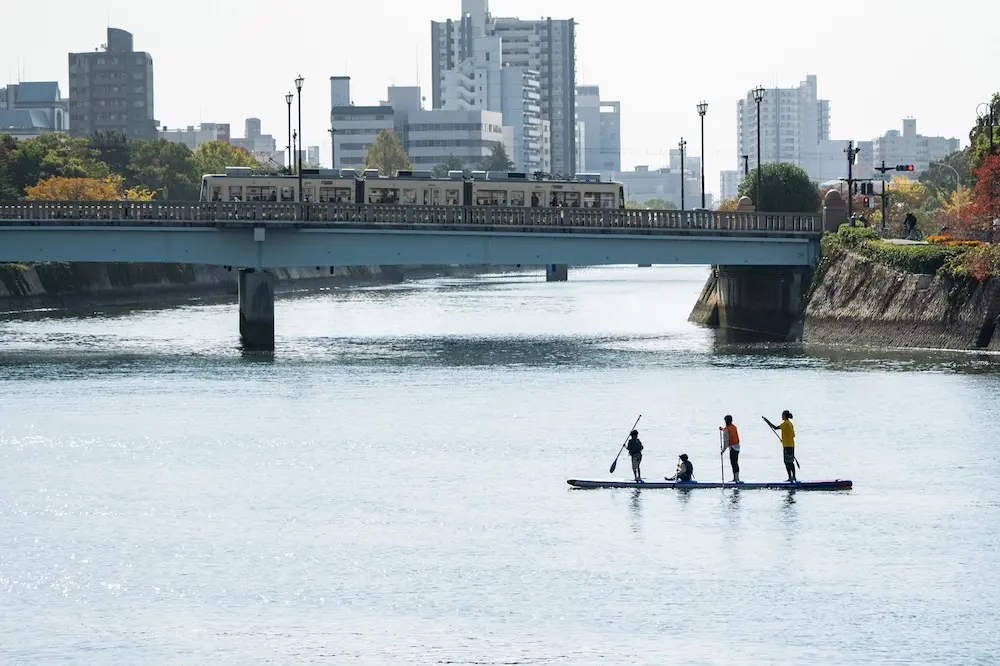
Help me, O, help me!
Water!
Give me water!
A-bomb poet Tamiki Hara’s Give Me Water echoes an element common in descriptions of the aftermath of the A-bomb attacks on Hiroshima and Nagasaki. Again and again, survivors describe how people, horribly wounded by the blast, desperately cried out for water.
26-year-old nursery school teacher, Toshie Une was lucky enough to survive the initial blast almost unscathed. While searching for children under her care, she came across horribly injured victims gesturing that they were desperate for water. She promised to find water and return, but was told that Hiroshima’s water had been poisoned by the bomb and was forbidden from giving it to anyone. Her failure to return haunted her in the years that followed.
Fulfilling a promise through kensui
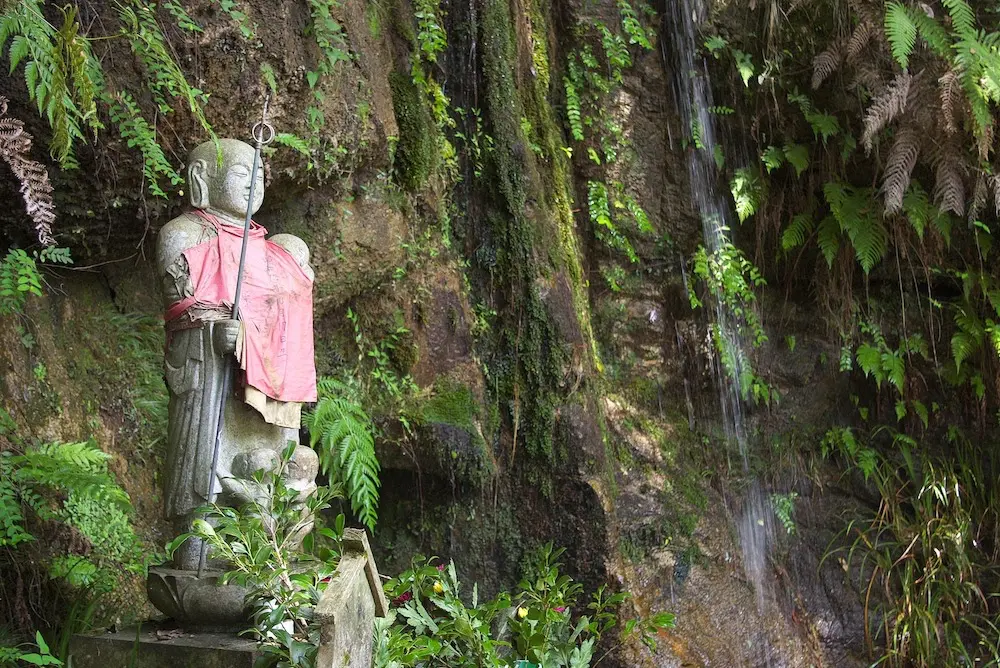
Hiking in the mountains years later, Une came across Kannon no Taki, a beautiful waterfall named for the Buddhist Goddess of mercy just outside central Hiroshima. Une thought had she known that such a pure water source was so close by, maybe she could have helped the injured. She resolved to offer comfort to their souls and ask their forgiveness for failing to keep her promise by making offerings of Hiroshima’s purest water at memorial monuments throughout the city.
This act of offering water to comfort the souls of the dead of Hiroshima and Nagasaki is termed kensui and Une continued to perform the simple, but poignant rite, at scores of monuments for more than 50 years. Part of Nagasaki’s annual peace memorial ceremony, a kensui rite was added to Hiroshima’s ceremony in 1974 with Une taking part until her death in 2012 at the age of 93.
Continuing the legacy of Toshie Une

Une passed away at the age of 93 in 2013, but her legacy has been taken on by the Kensui no Taki Monogatari (Kensui Story of Peace and Waterfall) group. Through the continuation of Une’s acts of remembrance at A-bomb memorial sites around Hiroshima, regular cleaning and ritual meditation under the waterfall that inspired her, the group of volunteers aims to keep the spirit Une alive while spreading awareness of the concept of kensui.
At the riverside, it is striking how many of the people involved in the kensui project only learned about the Une’s acts of remembrance through an interest in preserving the pristine nature of the waterfall, often via connections formed through a love and respect for nature and the outdoors.
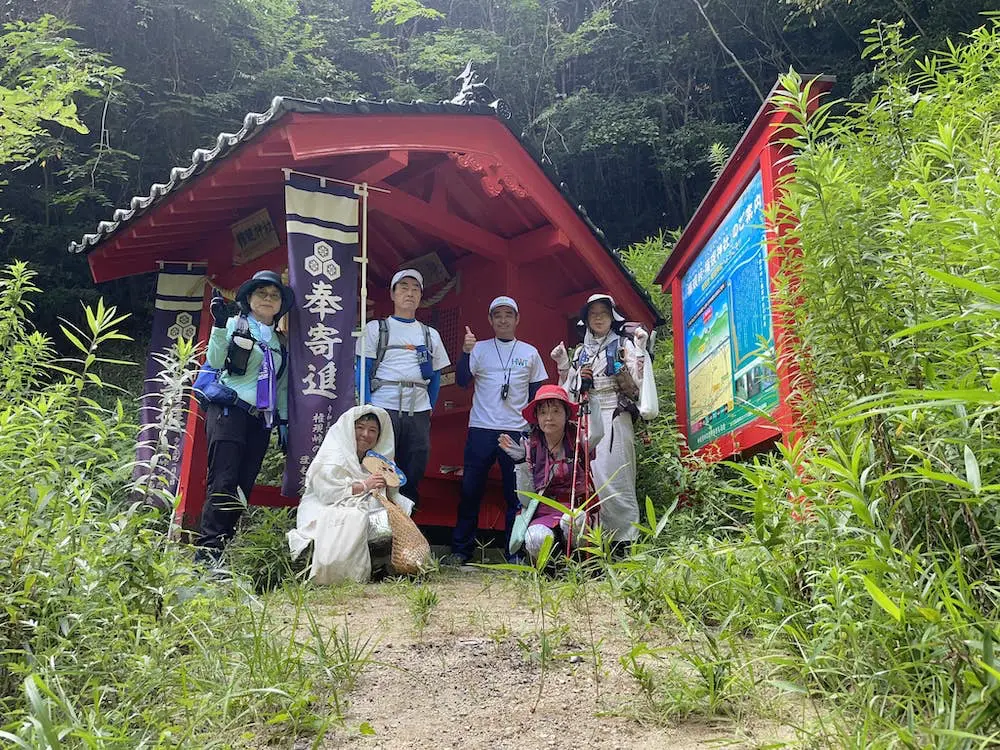
Thanks to a kami-shibai picture theater with Japanese and English narration on a large screen at the riverside we learn more about Une and how she inspired those who fell in love with Kannon no Taki waterfall to continue her acts of remembrance. For the last 7 years, the group have set out on the night before the August 6 A-bomb anniversary, hiking through Hiroshima’s mountains to collect water from some of its purest natural springs. The following day, the water collected is mixed and offered at 120 memorial sites. It is an act of remembrance that honors both the lost and the legacy of Une. It also seems to be an expression of deep gratitude to the life-giving gift of water itself.
Restoring Hiroshima’s rivers to the center of the city’s identity
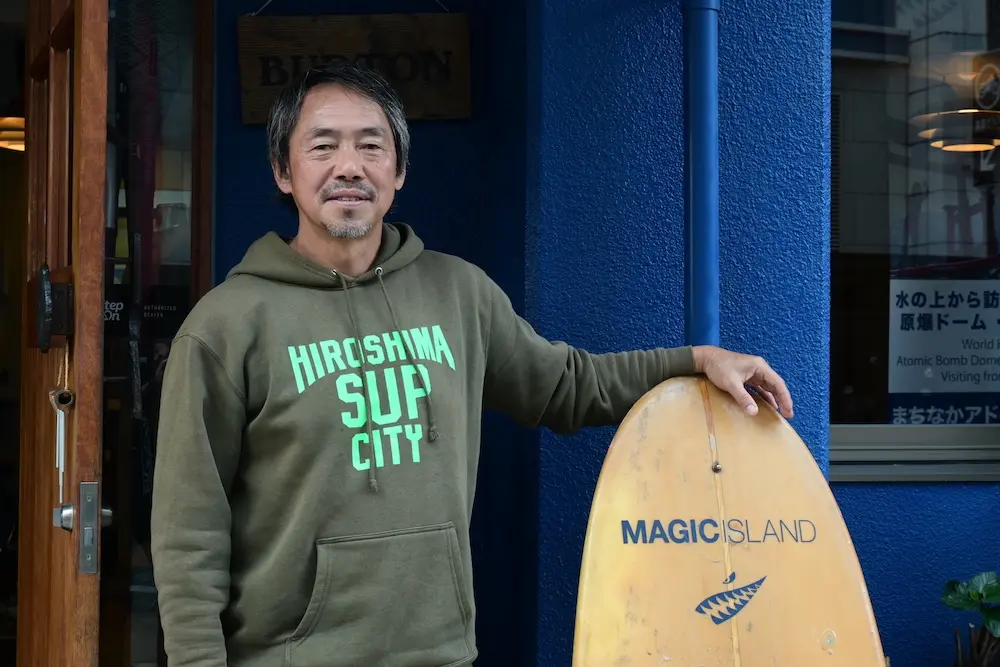
Back down on the delta, Ryuji Nishikawa has been thinking about the place Hiroshima’s waterways occupy in the city’s history and its imagination for over a decade. He was struck by a black and white photo, taken a few years after the A-bomb attack, of joyous children leaping into the river from the top of a makeshift tower with the ruined A-bomb Dome standing in the background. While respecting the tragedy which they have witnessed, Nishikawa wants the people of Hiroshima to rediscover their love of its rivers.
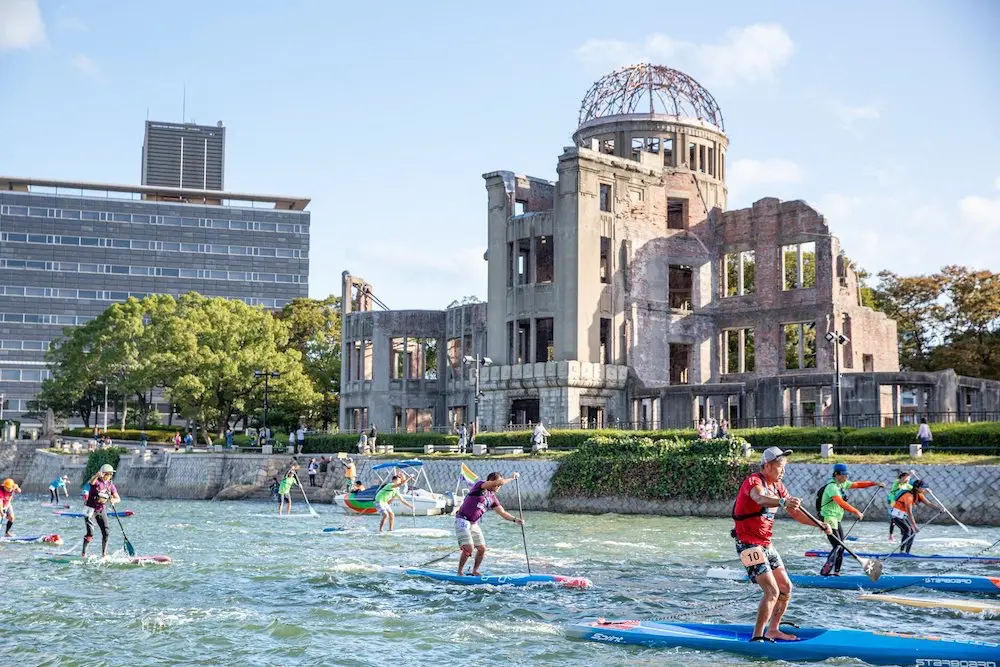
Nishikawa was the first to take advantage of the stone steps that remain along the banks of Hiroshima’s rivers to access the water and paddle around town on a Stand Up Paddle Board (SUP). Nishikawa now guides visitors on SUP tours to Hiroshima’s iconic A-bomb Dome Memorial. He also organizes the annual River Do! Hiroshima City River Festival which includes an international SUP race, involving a 13-km circumnavigation of the city. The festival is part of Nishikawa and the River Do! Consortium’s vision of restoring Hiroshima’s rivers to the center of the city’s identity and promoting them as a resource to be enjoyed, appreciated and protected by all.
A meeting of minds and taking kensui beyond Hiroshima and Nagasaki
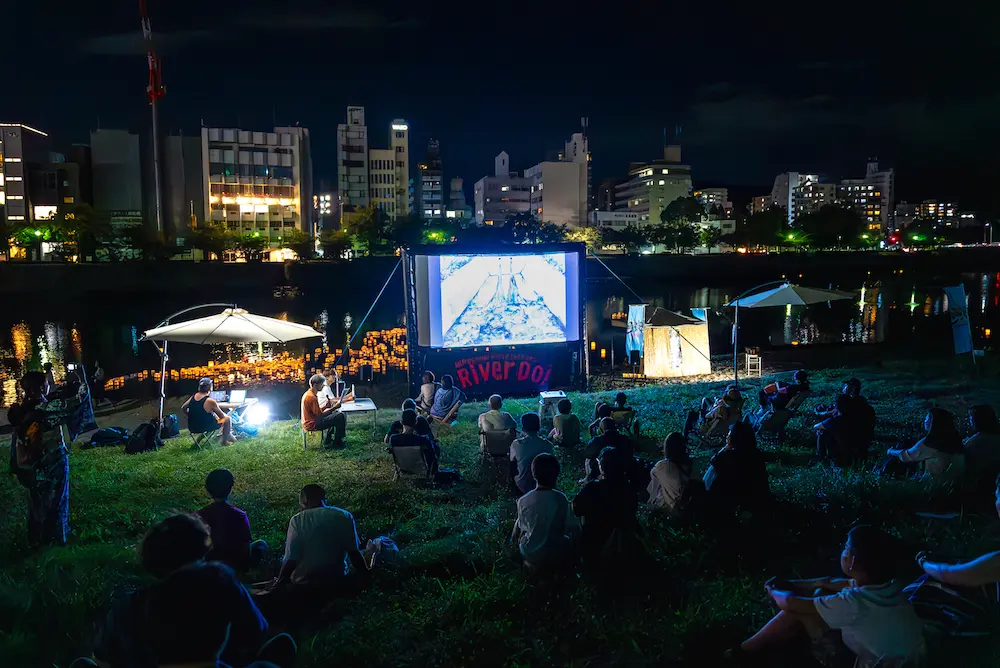
When Nishikawa learned of the kensui group’s activities, he recognized a kindred spirit. Impressed by their respect for the legacy of Une and their appreciation of the intimate connection between the health of the mountain forests from which Hiroshima’s rivers spring, the Hiroshima delta through which they flow and seas into which they empty, Nishikawa was keen to find a way to help spread the concept of Kensui.
The evening concluded, appropriately, with the participants symbolically pouring a cup of the collected water into the river while making their own quiet wish for peace. As we lined up to make our offerings in front of a large photograph of a beaming Toshie Une, stood at her favorite waterfall, scores of colorful paper lanterns floated by. It was a beautiful sight and an appropriate tribute to this incredible woman who had brought us together.
● Learn more about the Kensui no Taki Monogatari Project here http://kensui.org/waterfall/
● The River Do! Hiroshima City River Festival and International SUP Race will be held November 3-4, 2023
https://www.river-do.com/


